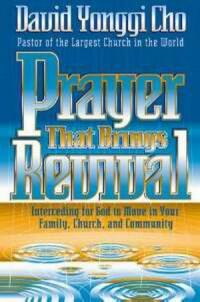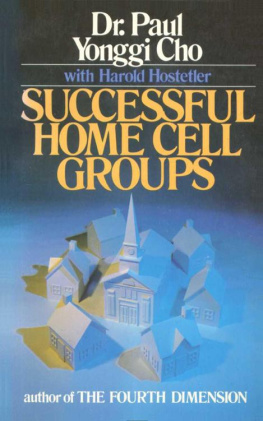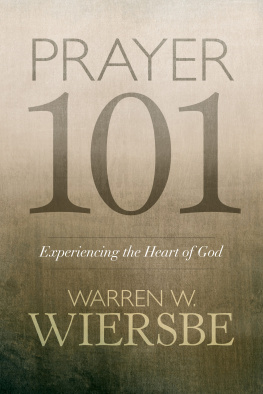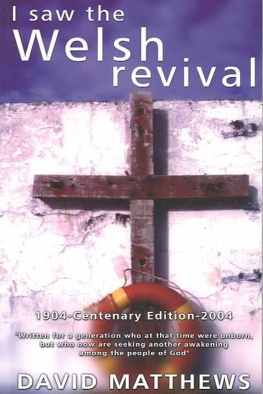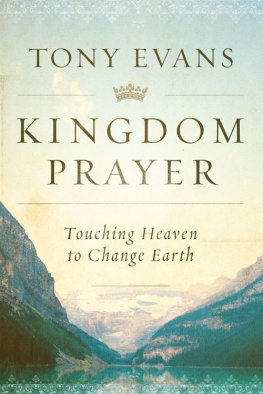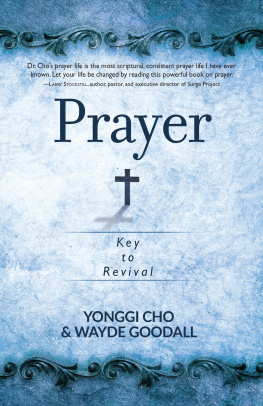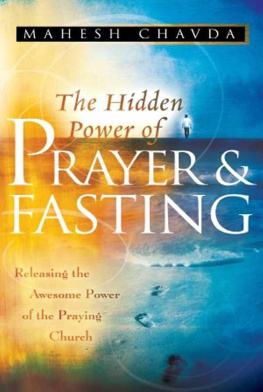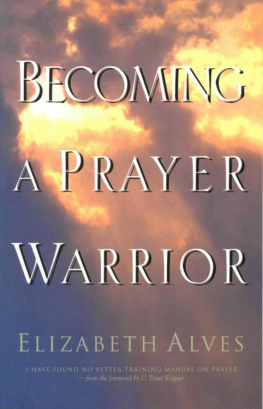Interceding for God to Move in Your Family, Church, and Community
If my people, which are called by my name, shall humble themselves, and pray, and seek my face, and turn from their wicked ways; then will I hear from heaven, and will forgive their sin, and will heal their land.
2 Chronicles 7:14
Part I: Motivating Christians to Pray
Part II: The Three Types of Prayer
Part III: The Forms of Prayer
Part IV: Methods of Praying
Part V: Powerful Prayer Is Based on the Blood Covenant in Christ Jesus
Introduction
Y oido Full Gospel Church, the church I pastor in Seoul, Korea, with its 750,000 members, is the world's largest church. Every month as many as seven hundred new converts are being saved from Buddhism, secularism, and nominal Christian backgrounds.
How could a church grow this large?
Is it possible for other countries to have this kind of revival?
I am convinced that renewal is possible anywhere people dedicate themselves to prayer.
It is because I believe in revival and renewal that I have written this book. It has been historically true that prayer has been the key to every revival in the history of Christianity.
Before the church was born on the Day of Pentecost, Luke wrote, "And [the disciples] were continually in the temple, praising and blessing God" (Luke 24:53). In the Book of Acts, Luke further amplifies what the disciples were doing: "These all continued with one accord in prayer and supplication" (Acts 1:14). The church was born when the Holy Spirit descended during a time of concentrated prayer.
Before the missionary era of the church began, the Holy Spirit revealed to the leaders gathered in Antioch that they should send Barnabas and Saul. Yet, the Holy Spirit only spoke after they had fasted and prayed.
Throughout every move of the Spirit upon the church since its birth, revival has been preceded by prayer. The Reformation was born after Martin Luther locked himself in a room within the tower of the Black Monastery at Wittenberg for a season of prayer and intense study of the Word. John and Charles Wesley and George Whitfield spent hours in prayer and fasting and, as a result, the worldwide Methodist revival was born. As the twentieth century rolled in, God responded to the prayers of many men and women of God who were committed to prayer and fasting for revival, and the Holy Spirit fell as in the second chapter of the Book of Actsand Pentecostalism was born.
Now, we are at the dawning of a new century. A new outpouring of the Holy Spirit is desperately needed. At no time in the history of the modern world has there been such an outpouring of satanic influence as there is today. The bottom of the pit of hell is belching out its filth in murder, rape, pornography, lawlessness, and violence. Just as the preaching of the Wesleys kept Britain from following France in revolution in the eighteenth century, so too a new outbreak of revival can bring about the social and political changes necessary to keep us from international destruction and calamity. What will bring about the revival that can lead the world away from the brink of total destruction and annihilation? The answer is a new call to prayer!
In 1991, after a season of intense prayer and fasting, a prophetic vision began to unfold before my eyes. God began to speak to me about a sweeping revival that would finally come to the United States, a nation that seemed to have been bypassed as God's Spirit flowed throughout other parts of the world.
At the Holy Spirit's prompting, I pulled out a map of America and allowed the Spirit to guide my hand to the area where this revival would break out. My finger rested on Pensacola, a Florida panhandle city hardly associated with spiritual fervor. In fact, the city was known to the homosexual community as the "gay Riviera." A seven-mile stretch of beach on the Gulf of Mexico just east of the city attracted thousands of homosexuals and lesbians over the Memorial Day weekend every year, and the homosexual population reached as high as fifty thousand. Pensacola was definitely one place to be if you were gay.
It was also the place to be if you wanted an abortion. At one time, the city was home to three abortion clinics. Three clinic bombings on Christmas Eve of 1984 had put Pensacola on the map; within three years of my vision, the murders of three clinic workers had drawn worldwide attention to the city of fifty-eight thousand people.
On that night in 1991, I believed I had heard the voice of the Lord loud and clear: "I am going to send revival to the seaside city of Pensacola, and it will spread like a fire until all of America has been consumed by it." Word spread across the country about the coming revival. In no time, it reached the ears of John Kilpatrick, pastor of Brownsville Assembly of God in Pensacola. Here is the account of what happened next.1
Years earlier, Pastor Kilpatrick had spent an extended time in prayer about the direction the church's Sunday night services should take. During that time, the Lord prompted him to turn to Matthew 21:13, which reads, "My house shall be called a house of prayer" ( nkjv ).
In 1988 Pastor Kilpatrick shifted the focus of his life to prayer. That began a special and intimate journey with God, as the Lord taught John Kilpatrick deeper and deeper lessons about the nature of prayer. He began to incorporate fasting into his prayer routine as well, further deepening the well of wisdom God was forming in his spirit.
All through the early nineties, Kilpatrick led his church in a growing awakening into the power of prayer. By 1993 regular, systematic prayer was firmly entrenched in the congregation's worship routine.
Once word of my prophecy reached Kilpatrick, he and the leadership of Brownsville Assembly set aside Sunday nights exclusively for prayer for revival. For nearly three years they prayed. They prayed for the lost, for political leaders, church leaders, denominational leaders, and school officials. Brownsville's road to revival was under construction.
Also "under construction" were the church's prayer bannersanother evidence of this congregation's knack for bringing abstract concepts to life. As a continual reminder of the prayer needs of the church and the community, church members created a dozen different banners to help people focus on those areas they needed to bring before the Lord: warfare, family, lost souls, governmental leaders, healing, pastors, revival, schools, ministries, the peace of Jerusalem, children, and catastrophic events.
Leaders assigned to each banner would gather specific prayer requests related to the theme and lead prayer around the banner. After each banner focus was prayed about, the congregation would join in corporate prayer. And much to the surpriseand delightof many, the attendance at the Sunday evening prayer services began to increase.
"Prayer absolutely conditioned our church for revival," says Kilpatrick. For a reason they would not discover until two years later, a growing number of people found themselves particularly drawn to the revival banner, united in deep intercession. In May of 1995, as Christians gathered downtown to pray at a rally held in connection with the annual March for Jesus event, the crowd heard my prophetic words again: "I am going to send revival to the seaside town of Pensacola..."
No one saw it coming. No one predicted the day and the hour. No one even suspected that the Father would come on the most obvious day of allFather's Day. But nothing laid the foundation for revival as prayer did.
In one sense, the day Pastor John Kilpatrick's mother died signaled the very beginning of revivalthough few people would have thought it at the time.
A month after her death, Kilpatrick found that he was far less able to handle his mother's passing than he had thought. She had died of cancer on May 7, 1995, and her illness and death had taken a tremendous toll on the then forty-five-year-old Kilpatrick. Before she died, Kilpatrick knew that revival was on its way. It was in the air, and its unmistakable scent was strong. Now, revival seemed far away.

